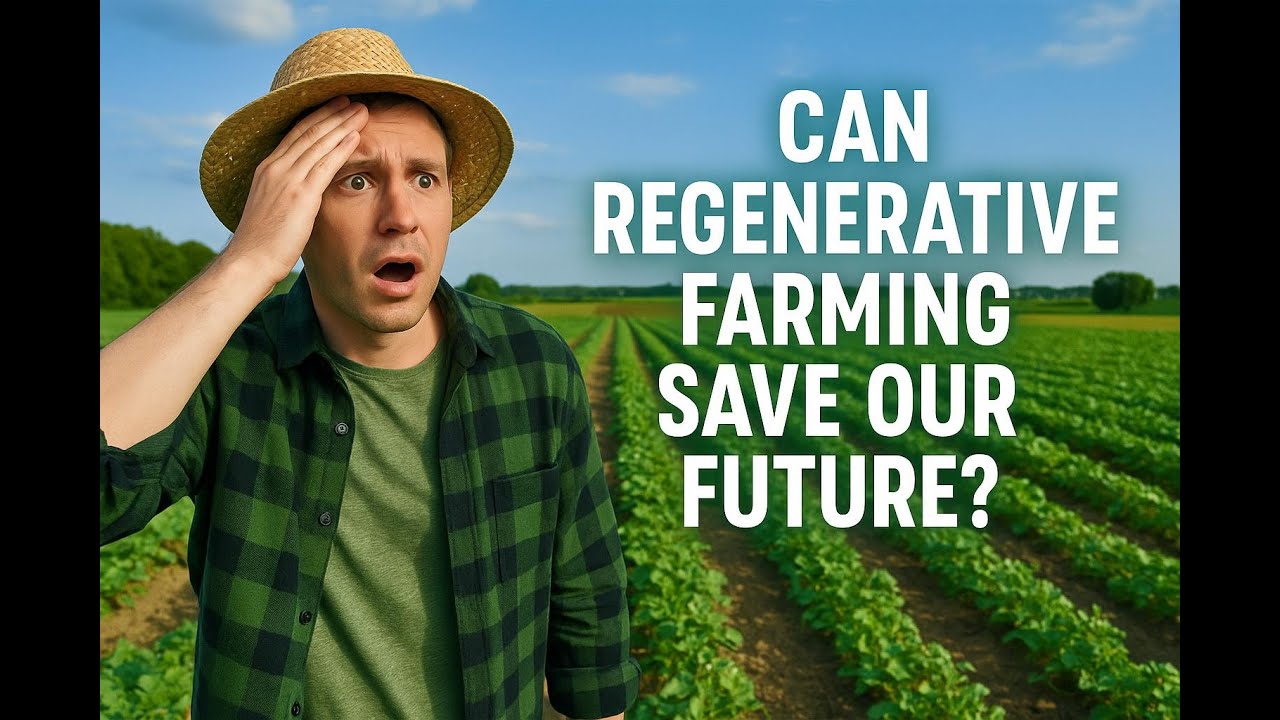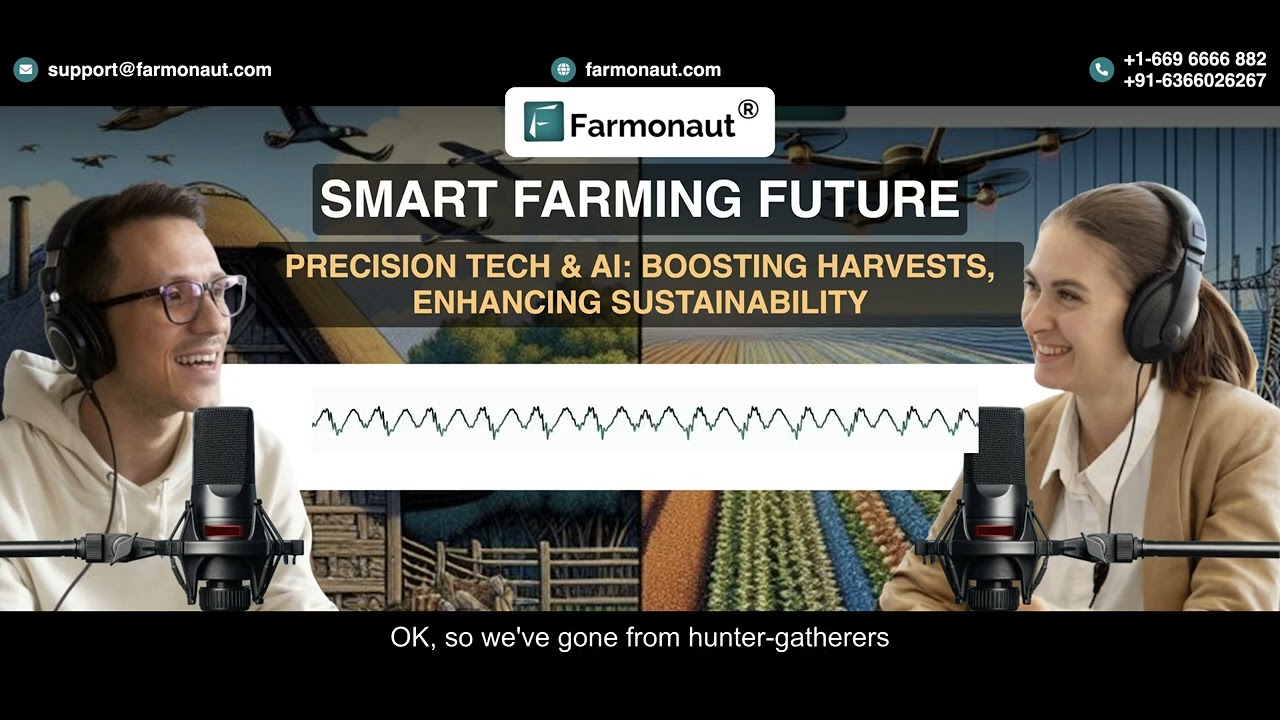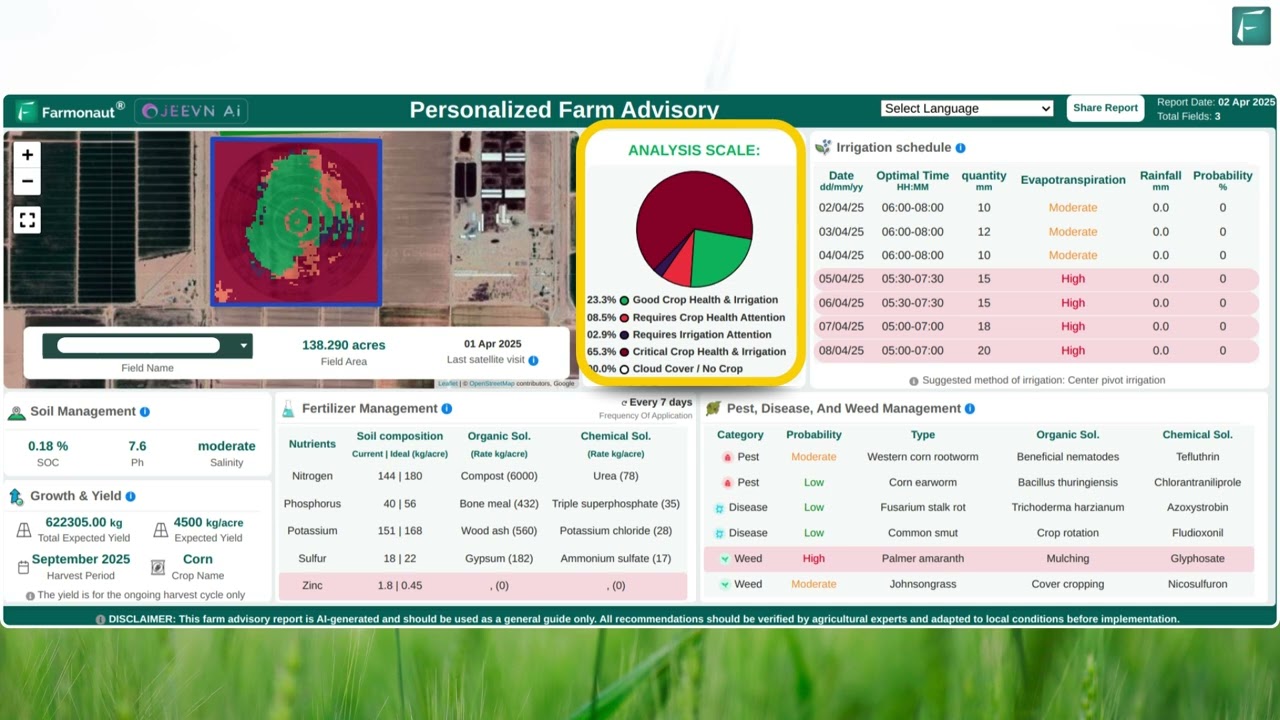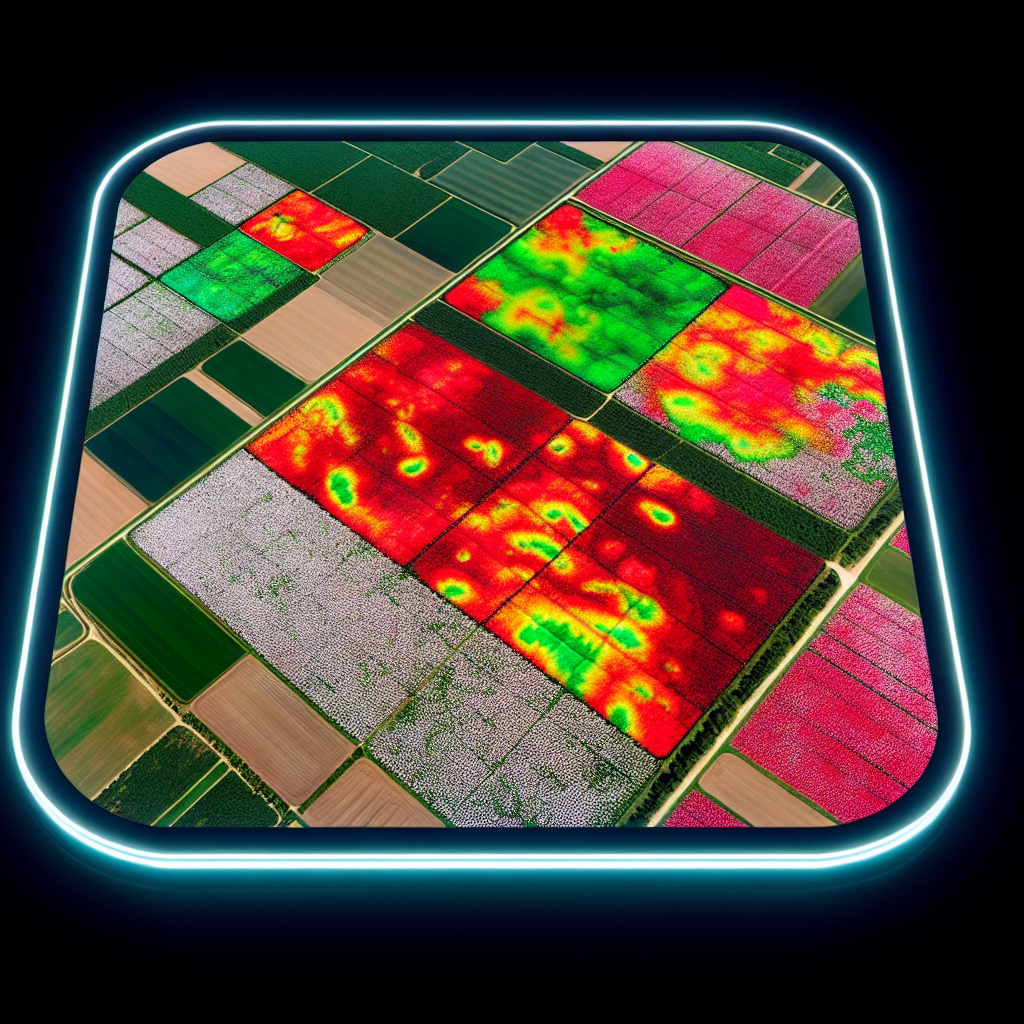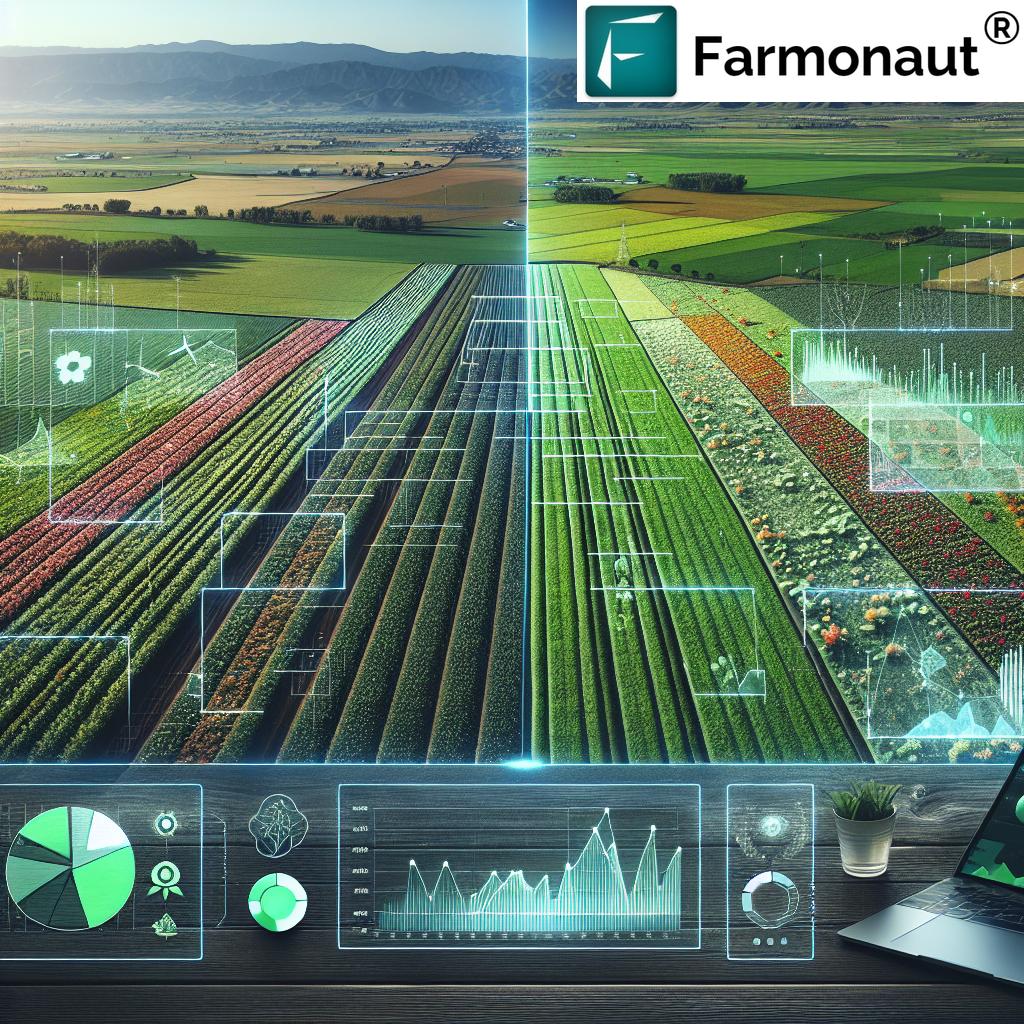Data Farming vs Data Mining: Big Data in Organic Farming for 2025
Introduction: Blazing New Trails in Big Data and Farming for 2025
In the rapidly evolving landscape of agriculture, the precise integration of data, smart analytics, and simulation tools are reshaping how farmers and stakeholders approach sustainable farming. With a focus on both productivity and environmental responsibility, the adoption of big data in farming has become pivotal—especially for organic agriculture, where chemical-intensive shortcuts are not an option.
Key terms like data farming and data mining are often interchangeably used, yet they refer to distinct approaches that are both essential in modern agri-analytics. Understanding their unique roles in organic farming data management is crucial as we move into and beyond 2025.
This guide will clarify the differences between data farming vs data mining, their relevance to organic practices, and how big data and farming together are enabling a revolution in how we analyze, optimize, and sustain global agriculture.
“By 2025, big data analytics in organic farming is projected to increase crop yield efficiency by up to 30%.”
What is Data Farming? Creating Synthetic Data for Agricultural Insight
What is data farming? In the context of agriculture, data farming refers to the systematic generation of large-scale, complex datasets using simulation models and controlled experiments that replicate farming environments. Unlike traditional data collection which relies just on real-world field observations, data farming intentionally produces synthetic data that enables rapid exploration of hypothetical outcomes under vast combinations of crop types, weather conditions, soil types, irrigation strategies, and management practices.
- Systematic & Controlled: Data farming intentionally sets up virtual experiments to generate new datasets, not just collect what’s already there.
- Simulation-Based: Through advanced models, researchers can run thousands of virtual scenarios to predict how crops would respond to changes (climate, soil, irrigation levels).
- Accelerates Innovation: With data farming, we can test multiple organic management and pest control strategies without the need for exhaustive field trials, reducing time and resource constraints.
- Generates Synthetic Data: The resulting synthetic datasets are vast, representative, and designed for hypothesis-driven analysis.
For organic farming, data farming allows researchers to virtualize nutrient cycling, crop rotation timing, pest management, and soil health enhancement. By leveraging simulation experiments and virtual environments, organic farming data can be rapidly generated to optimize practices—empowering farmers to innovate and adapt for sustainable outcomes.
Key Examples of Data Farming in 2025 Agriculture
- Crop Growth Modeling: Simulating organic wheat under varied irrigation and weather patterns to predict yield and pest risks.
- Precision Nutrient Testing: Virtualizing different organic fertilizer rates to estimate soil health and crop productivity in specific regions—without real-world application costs.
- Pest Management Design: Running thousands of virtual experiments to simulate the effect of companion planting and biological pest controls in organic systems.
- Climate Change Impact Projections: Modeling scenarios for how extreme weather events might affect certain organic practices, allowing rapid adjustments in planting schedules or crop types.
In summary: Data farming refers to the generation of synthetic datasets through simulations, helping farmers and researchers unlock new possibilities without waiting on years of real-world data collection.
What is Data Mining? Extracting Value from the Field’s Raw Data
The term “data mining”, in agriculture, involves extracting meaningful patterns, correlations, and trends from existing datasets. Unlike data farming—which generates synthetic data—data mining processes raw, often real-time, data collected from sensors, satellites, drones, weather stations, farm equipment, and even market reports.
- Actionable Insights: By using statistical and AI-based analytics, farmers can discover hidden dependencies and predictors—such as how soil moisture, temperature, and weather changes affect crop health over time.
- Resource Optimization: By mining large repositories of organic farming data, decisions around water usage, fertilizer application, and pest control can be made highly precise, minimizing waste and maximizing yield.
- Early Pest / Disease Warnings: Data mining algorithms can detect patterns in crop imagery and sensor records, identifying abnormal growth signatures or the early signs of outbreaks before they become visible—improving crop resilience.
- Market Intelligence: By connecting on-farm data with external market trends, farmers gain decision-support for what to plant, when to harvest, and how to manage storage or logistics based on price forecasts and demand prediction.
Key Methods: Machine learning, deep analytics, pattern recognition, clustering, regression, and even blockchain traceability analysis are at the heart of agricultural data mining.
In 2025 organic farming, effective data mining is recognized as essential for real-time management, cost-saving, risk reduction, and certification compliance.
| Data Farming vs Data Mining: Key Differences and Impact on Organic Agriculture (2025, Estimated) | |||||||
|---|---|---|---|---|---|---|---|
| Technique | Core Purpose | Data Volume Managed (TB, Estimated) | Analytics Type | Main Technologies Used | Application in Organic Farming | Impact on Yield (%) | Sustainability Score (Estimated/10) |
| Data Farming | Generate synthetic data via simulation models & virtual experiments | Up to 1,500 TB (simulated scenarios across variables) | Predictive Modeling, Scenario Analysis | Simulation Engines, AI/ML, Synthetic Data Generation | Test new organic strategies virtually (e.g. pest control, nutrient cycles, crop yields under climate shifts) | 15-25% (faster/better experimentation) | 9.0 |
| Data Mining | Extract actionable insights & patterns from existing raw, real-world data | Over 5,000 TB (including sensor streams, satellite, field & market data) | Pattern Recognition, Machine Learning, AI Analytics | Satellites, Drones, IoT Sensors, Big Data Platforms | Optimize irrigation, real-time pest detection, compliance tracing, soil health management | 25-30% (better day-to-day management) | 8.5 |
Big Data in Farming: Synergizing Data Farming and Data Mining
At the intersection of data farming and data mining lies the heart of big data in agriculture—a dynamic space where synthetic simulations meet real-world observations. This synergy creates a vast, actionable knowledge base empowering farmers to optimize every aspect of farm management in real time, paving the way for smart and sustainable farming in 2025 and beyond.
- Volume: Farm sensors, satellite imagery, drones, weather data, market stats, and simulation outputs mean data grows exponentially (Petabytes/year).
- Velocity: Real-time analytics (e.g. soil moisture sensors updating every 10 minutes) support rapid decision-making.
- Variety: Structured (tables, logs) and unstructured (satellite images, drone footage) data, from both physical field observations and synthetic data farming, are all integrated.
By harnessing both simulation insight (data farming) and real data analysis (mining), 2025’s smartest farms achieve:
- Context-aware pest management
- Predictive crop scheduling
- Precision irrigation and nutrient application
- Early warning systems for pest and disease outbreaks
- Carbon footprint tracking and resource optimization
- Market-driven planting/harvesting strategies
Examples include simulation-based yield forecasts blending with satellite-sensed plant health, or blockchain-driven traceability that overlays on both sensor-collected field data and model predictions.
Big data and farming are inseparably linked, as both simulated and observed datasets fuel innovation in sustainable practices and help increase productivity while reducing environmental impact.
Organic Farming Data & Advanced Analytics
In organic farming, the absence of synthetic chemicals makes data-driven precision even more crucial. Data farming enables the simulation and testing of organic nutrient cycling, biological pest control, mechanical weeding, and carbon sequestration approaches at scale—without the risk and expense of traditional field trials.
Meanwhile, data mining gives farmers real-time visibility into soil health, pest hotspots, irrigation needs, and market shifts. The combination empowers certified organic growers to make precise interventions, reduce risks, and optimize long-term sustainability.
- Organic farming data includes soil indicators, biodiversity status, yield tracking, farm inputs, and environmental impacts. All this must be managed without contamination from chemical pesticides or fertilizers.
- Predictive analytics, trained on both synthetic (data farming) and real-world (mined) datasets, help optimize crop rotations, plan organic amendments, and **document compliance** for certification bodies.
- Blockchain-based traceability solutions ensure that every input, field operation, and outcome is securely recorded and verifiable.
The integration of big data and farming analytics allows organic farmers in 2025 to:
- Design climate-resilient crop plans by running simulation experiments before each season.
- Mine live sensor data (soil moisture, leaf wetness, pest triggers) for precise, just-in-time actions.
- Predict outbreaks of invasive weeds and adapt pest management strategies accordingly.
- Demonstrate environmental outcomes and farm compliance with digital documentation.
- Improve yield, resilience, and sustainability without compromising on organic values.
Organic certification increasingly depends on robust, digitally traceable records—fueled by the fusion of simulation-based hypothesis testing and machine-learning driven insights from real field data.
How Analytics Improves Organic Sustainability
- Nutrient Management: Use soil data and model projections to time the application of compost, mulch, or green manure for maximum crop health.
- Pest/Disease Surveillance: Leverage big data mining from remote sensing and farm sensors to identify risk spots for intervention without excessive pesticide use.
- Yield Optimization: Combine real harvest data with simulation scenarios to fine-tune crop selection, rotations, and interplanting strategies.
How We at Farmonaut Empower Big Data and Organic AgriTech Innovation
At Farmonaut, we believe advanced, affordable satellite & AI-based insights must be accessible to every farmer, business, and government agency striving for sustainability in agriculture. Our technologies form the backbone for both data farming and data mining—powering the next generation of smart, organic farms.
- Satellite-Based Crop Monitoring: Using multispectral imagery, we deliver near real-time crop health, soil condition, and resource-use metrics, supporting in-season adjustments and robust organic reporting.
-
Jeevn AI Advisory: Our AI-driven platform analyzes weather, field sensor data, and simulation projections to provide real-time customized recommendations—from irrigation scheduling to organic pest control.
Explore Farmonaut’s Carbon Footprinting tools to track, report, and reduce carbon outputs in organic and conventional farming by integrating real-time environmental data with actionable insights. -
Blockchain Traceability: We ensure the authenticity and transparency of organic supply chains—vital for certification and market access—by linking every field operation to secure digital records.
Learn about Farmonaut’s Product Traceability Solutions—ensuring that every stage from seed to market is logged, verified, and tamper-proof, critical for premium organic markets. -
Fleet & Resource Management: Our tools enable the optimization of machinery and logistics on large or multi-location organic farms, reducing operational waste and environmental impact.
See Farmonaut’s Fleet Management solutions for efficient tracking, scheduling, and use of tractors, harvesters, and other farm assets—maximizing returns while minimizing carbon footprint. - Environmental Impact Monitoring: We empower organic and conventional farms to quantify emissions, track biodiversity, and comply with strict sustainability mandates—using robust, science-backed analytics.
Our platform is accessible via Android, iOS, web app, and API–enabling both smallholders and large-scale farm managers to engage with big data in farming effortlessly.
For large-scale agricultural management, explore dedicated Farmonaut’s Large-Scale Farm Management platform, which brings together live satellite updates, analytics dashboards, and remote operations for streamlined decision-making.
Farmonaut Subscriptions
To empower a wide spectrum of users—from smallholders to large agribusinesses and governments—Farmonaut offers affordable, modular subscription plans for monitoring, advisory, and management. This makes advanced data farming and mining capabilities available at every level of the value chain.
Developers and corporations can also tap into our API for seamless integration into their own agritech platforms, crop insurance portals, and logistics systems.
For accurate crop loan and insurance verification powered by satellite insights, visit our Crop Loan & Insurance page. Reduce fraud, lower risk, and streamline claim processing with remotely sensed, tamper-proof farm records.
“Over 60% of sustainable farms will use data mining techniques to optimize resource use and reduce waste by 2025.”
The Future—Smart, Sustainable, and Data-Driven Agriculture
As climate change, population growth, resource depletion, and regulatory compliance intensify, modern agriculture must move from a tradition-based craft to a science powered by big data, analytics, and technological integration.
The combination of data farming vs data mining—each with its distinct functions and use cases—is the backbone of this transformation. By harnessing advanced technologies, farmers simulate new ideas and mine operational data to continuously optimize yield, efficiency, and sustainability, particularly within organic farming systems.
We foresee widespread adoption of blockchain traceability, AI-driven recommendations, remote sensing for field health, and integrated resource management—all of which will rely heavily on the ongoing synergy between simulated and mined data.
- Improved certification and transparency for organic and sustainable produce
- More efficient, exact input use (water, nutrients, energy)—reduce waste, maximize returns
- Resilience to climate volatility through adaptive, data-driven decision-making
- Real-time environmental sustainability reporting for compliance and market differentiation
Big data in farming, with a strong focus on the complementarity of simulation (data farming) and field analytics (data mining), will become the norm for all successful, sustainable farms by 2025.
FAQ: Data Farming vs Data Mining, Big Data, and Organic Agriculture
What is data farming in agriculture?
Data farming refers to the systematic generation of complex, synthetic datasets through simulation models and controlled, virtual experiments that emulate farming environments. This helps researchers and farmers explore possible outcomes of agricultural practices without relying solely on real-world field observations.
What is the difference between data farming and data mining?
Data farming focuses on creating new, synthetic data via simulations and experiments to examine hypothetical scenarios, while data mining extracts valuable insights, patterns, and trends from existing datasets obtained through sensors, satellites, and farm equipment. Both approaches are essential in modern smart farming.
How does big data analytics help organic farming?
Big data analytics allows organic farmers to optimize crop rotations, analyze soil and plant health, predict pest outbreaks, manage compliance with certification standards, and maximize sustainable yield—often without relying on synthetic agrochemicals—by integrating both real-world and simulated datasets.
How can I use Farmonaut for organic farm management?
With Farmonaut’s suite of satellite, AI, and blockchain tools, you can monitor crop health in real time, optimize irrigation and resource usage, document every field operation for organic compliance, and perform advanced environmental reporting—all accessible via web, Android, iOS, or API.
What are some benefits of simulation in organic farming?
Simulation through data farming allows farmers and researchers to test and analyze new organic practices, such as biological pest management or climate-resilient crop patterns, at scale without the risk or cost of field trials—significantly accelerating innovation and adaptation.
Does Farmonaut support developers or large operations?
Yes, Farmonaut offers robust APIs and dedicated platforms for large-scale farm management, fleet tracking, and environmental compliance. Developers can integrate Farmonaut data streams and advisories directly into their systems for custom applications.
How does data mining reduce waste in sustainable agriculture?
Data mining identifies efficiency gaps and resource surpluses or deficits in real time. It enables precise application of water, nutrients, and treatments, cutting waste and ensuring that every resource input is accounted for and optimized—key to sustainability.
Conclusion
In 2025 and beyond, data farming vs data mining emerges as a defining theme in the modern, sustainable agriculture landscape. Simulation-powered data farming unlocks new scenarios and accelerates organic innovation without exhaustive or risky trials, while field-driven data mining translates live operational data into actionable strategy and compliance. The fusion, augmented by platforms like Farmonaut, will enable agriculture systems worldwide to scale yield, improve sustainability, and compete in fast-evolving global markets.
Ready to move your operation to the frontier of big data and farming? Start with Farmonaut today or contact us for a demo and see the future of sustainable farming in action.
—


